6 Clever Ways to Hide an Air Conditioner for a Better-Looking Yard
Conceal your bulky AC with these creative tips


In the sweltering summer heat, there’s nothing like the cold breeze of an air conditioner. But if you aren’t a fan of the way your AC unit looks in your backyard, there are a few tricks you can use to cover it up. Here are six of the best ways to hide an air conditioner so that it better blends into your outdoor space.
Safety Tips for Hiding Your AC Unit
You might be tempted to cover up your unsightly AC unit by whatever means necessary, but there are some limitations. Stick to these rules:
Avoid fitted covers (they can block airflow and potentially damage the unit).
Leave at least 4 feet of empty space around each side of the unit so that your HVAC technician can access it.
Allow at least 5 feet of clearance above the unit so that heat can safely escape.
When putting plants around your air conditioner, place them far enough away so that they don’t get hit by the heat the unit produces.
Unsure about any of these guidelines? Reach out to your local AC installer to get their professional opinion.
1. Conceal It With Landscaping
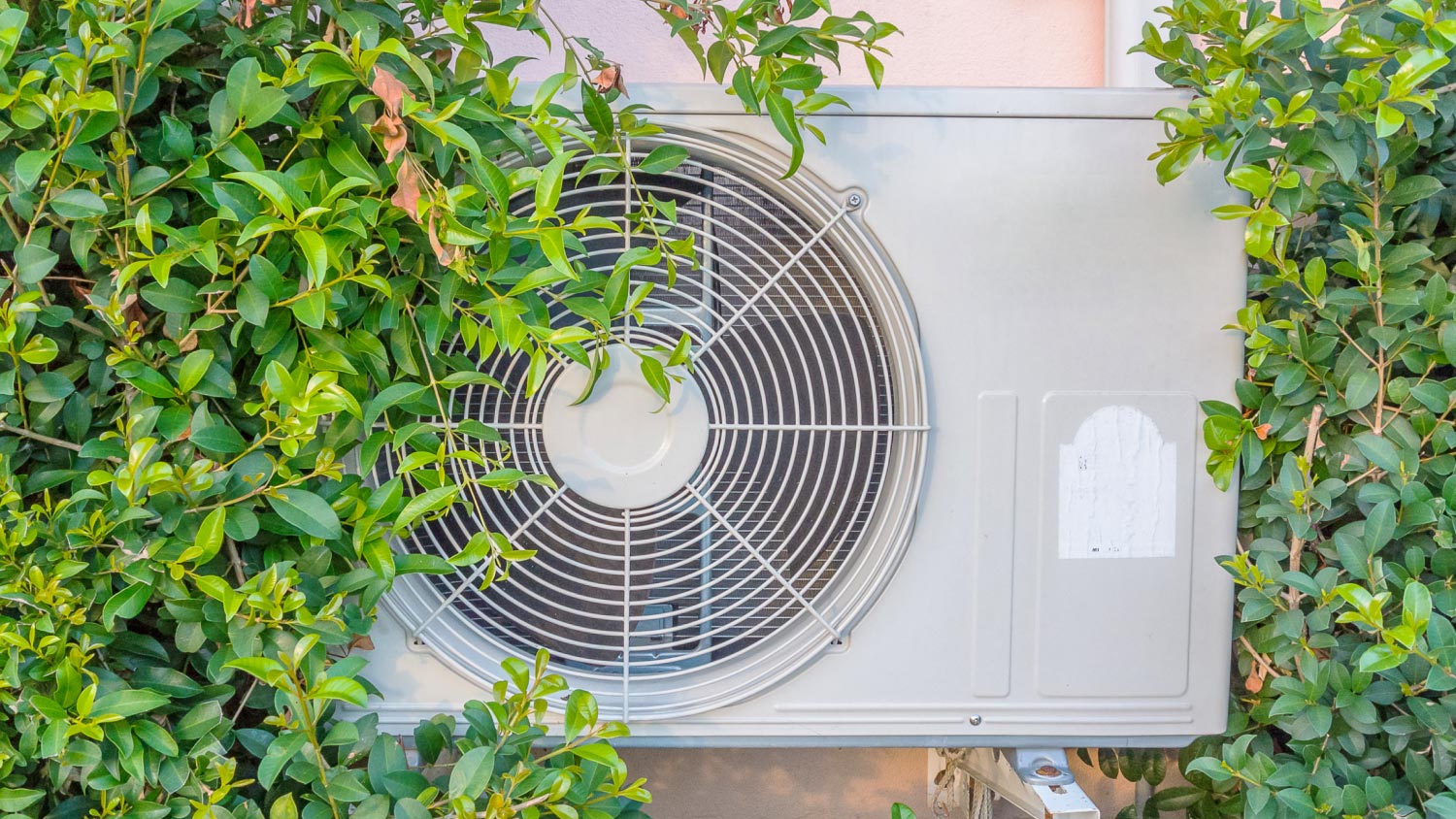
If you’ve got a green thumb, you can put it to good use by adding landscaping around your AC unit. Some popular options include:
Ornamental grasses, like fescue and silvergrass
Big-leaf plants, like hostas and elephant ears
Taller flowers, like irises and tulips
Before planting around your air conditioner, cover the surrounding area. Many people use mulch and rocks for this purpose, but if you have the choice, it’s better to go with rocks. A rock ground cover is more expensive, but it doesn’t need to be replaced as often. Plus, mulch can get into your AC unit and damage it, but large rocks won’t make their way inside.
2. Add a Fence
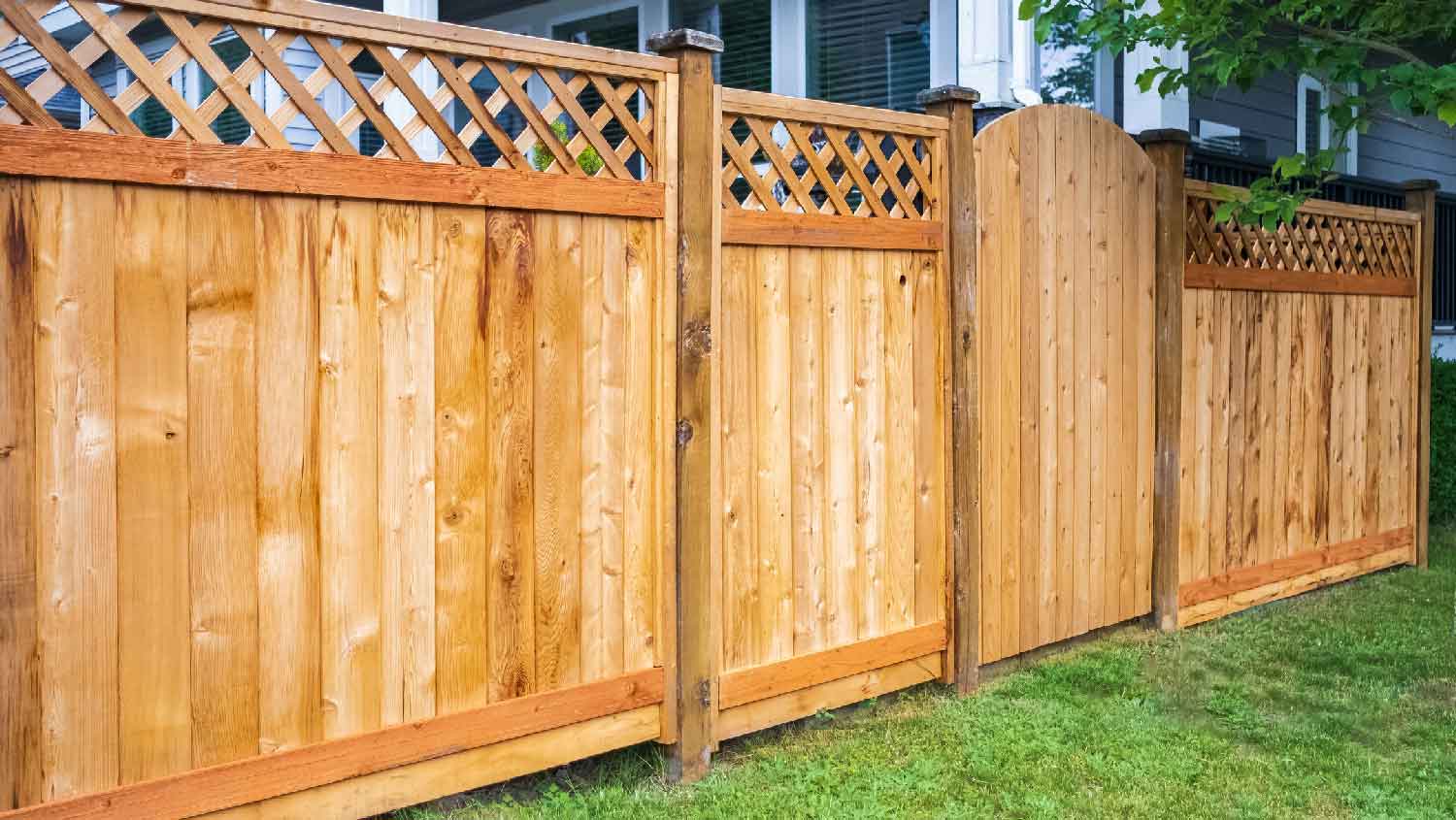
Putting up fencing is another easy way to hide an air conditioner. Just make sure to add a gate so that your HVAC expert can easily access the AC unit during service appointments. The gate should be at least the same size as your air conditioner in case the tech needs to replace it.
In addition to concealing your air conditioner, the fence also serves another practical purpose: protecting your landscaping from the heat produced by your AC unit.
3. Build a Wall
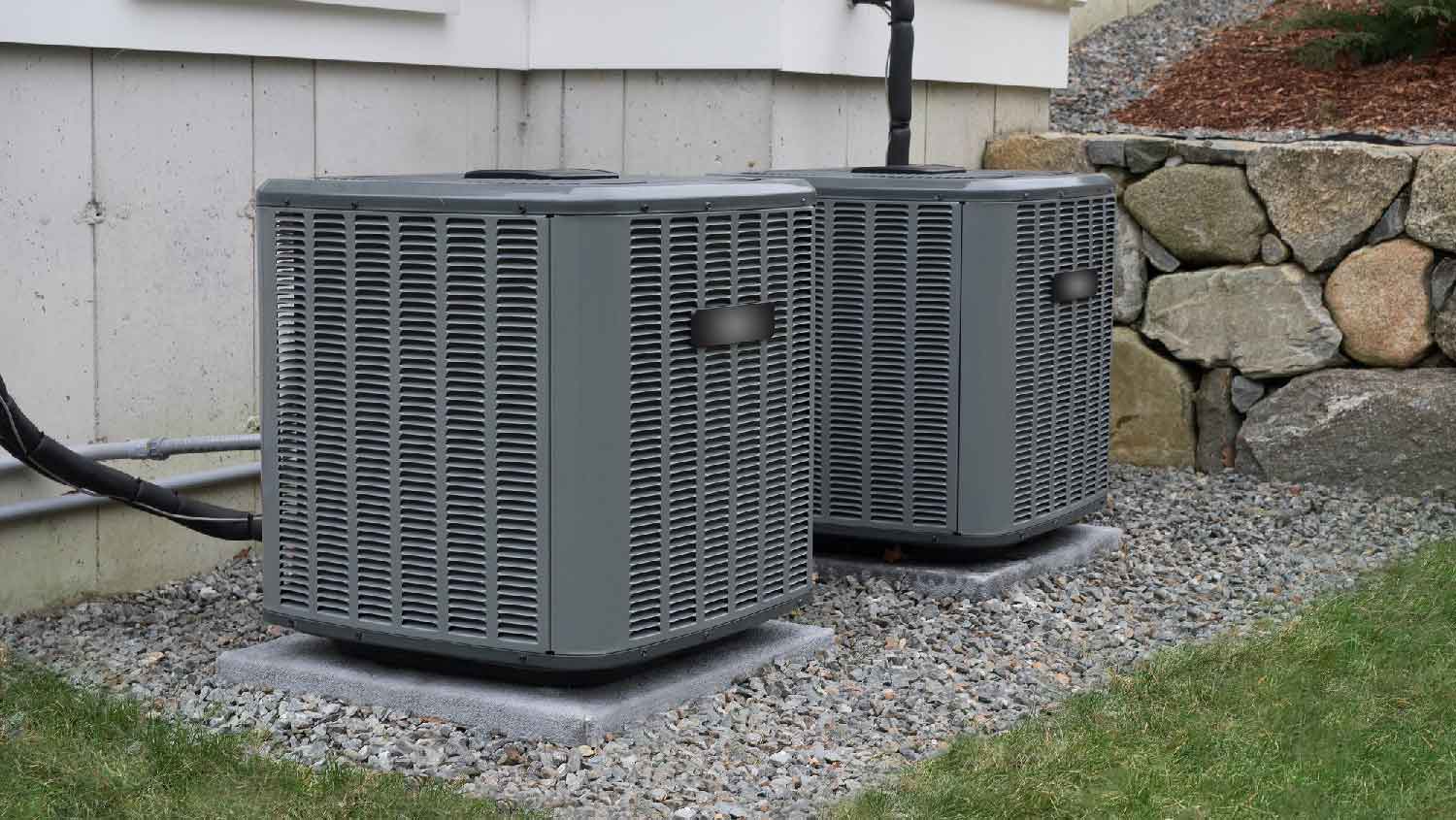
Don’t want to box in your AC unit with a fence? Consider building a single wall using a sturdy material like brick, natural stone, or cement blocks. Otherwise, you can flex your creative muscles and construct a wall from wooden pallets or other repurposed items. Once it’s up, you can customize the wall by painting it, installing planters, or adding storage shelves.
4. Hide It Behind a Trellis or Lattice Fencing
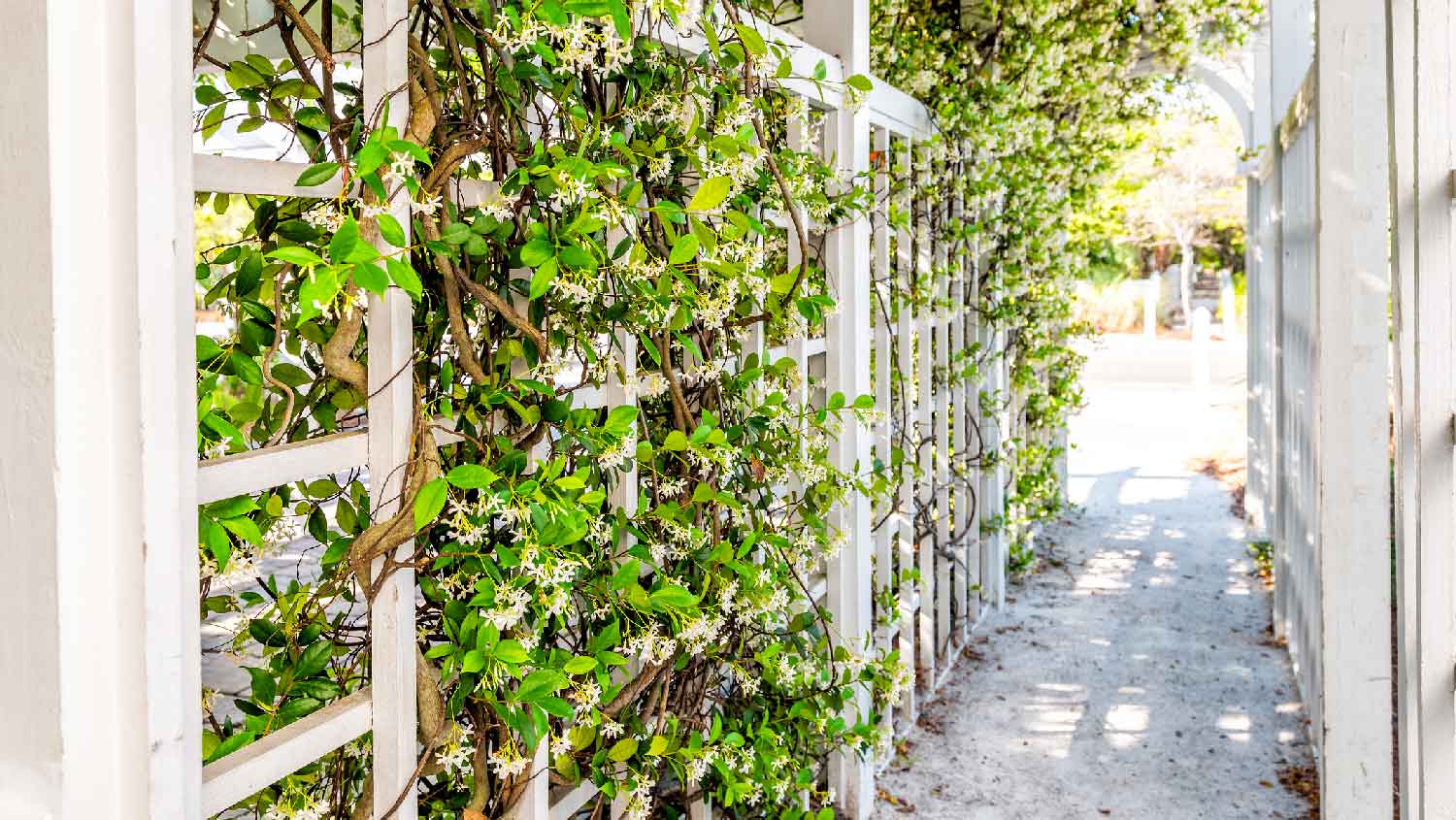
If you want your backyard to look more like a secret garden, set up a trellis or lattice fencing around your air conditioner, then let flowering vines grow around it.
Some plants to consider:
Ivy
Climbing hydrangea
Wisteria
Honeysuckle
Jasmine
5. Surround It With Potted Shrubbery or Large Plants
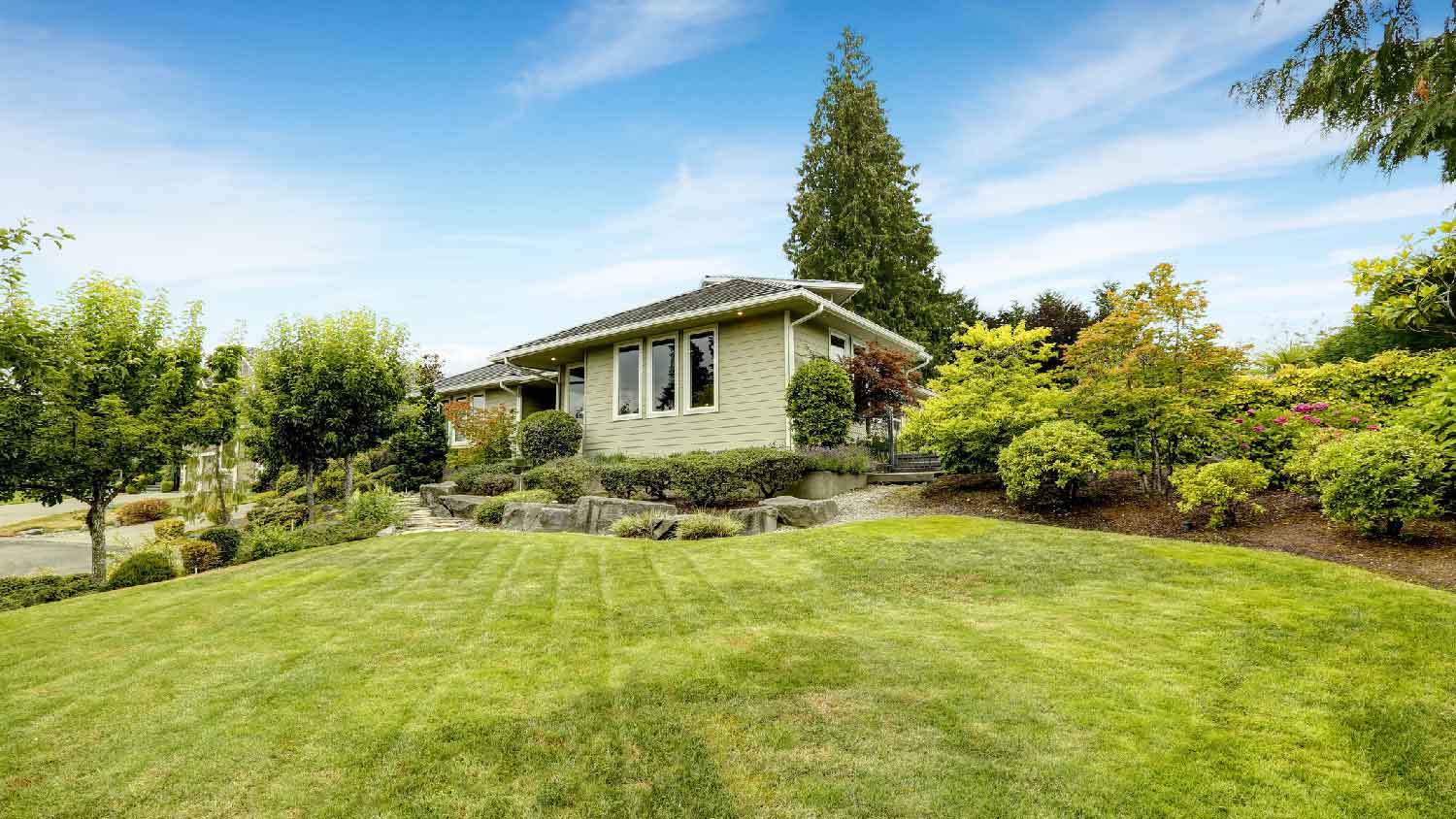
Placing potted shrubs or plants around your AC unit is a less permanent alternative to adding landscaping. Since they aren’t rooted in the ground, potted plants are easy to swap out and move around, so you can switch things up whenever you’d like.
Here are some potted plants you can use to conceal your AC:
Bamboo
Snake plants
Palms
Cactus
Fiddle-leaf figs
6. Put Up a Privacy Screen
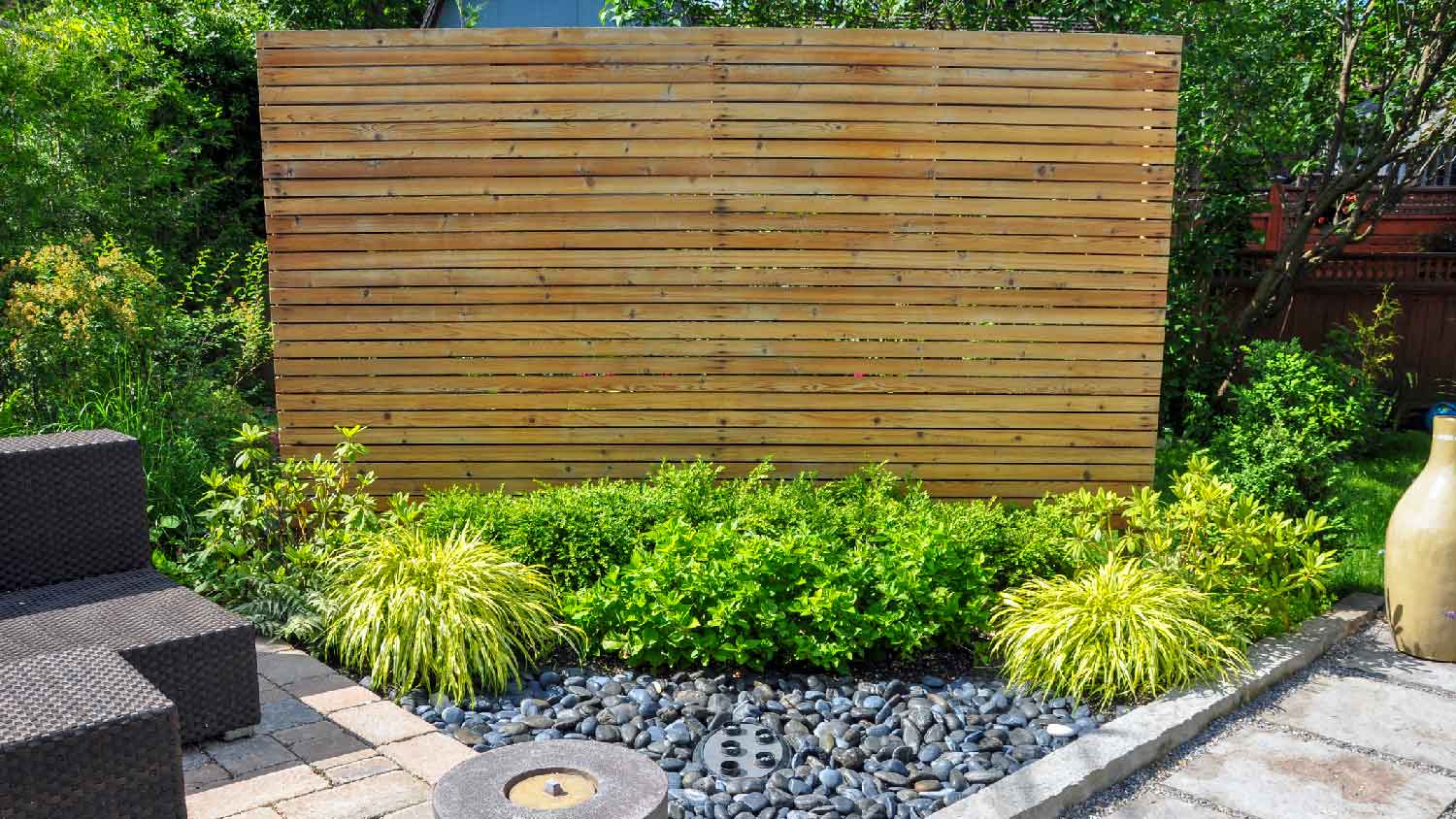
If you don’t want to build or plant anything, you can simply hide your air conditioner behind a privacy screen. These screens are available in a variety of colors, designs, and heights, so it shouldn’t be too hard to find one that suits your style.
Frequently Asked Questions
You can use many of these same tactics to hide an indoor HVAC unit, depending on its location. For example, if you have or plan to install a window air conditioner, you could surround it with tall potted plants—as long as they don’t block the airflow. Not sure how to hide an air conditioner wall unit near your ceiling? You could put it in a slatted cabinet so the unit stays hidden but can still push cool air through the openings in the cabinet.
Yes, you can build a deck over your outdoor HVAC unit, but you need to leave at least 5 feet of vertical clearance above the unit. If you don’t want your deck to be that high off the ground, you could build a floating deck in another part of your yard—again, as long as you leave at least 4 feet of horizontal space between the deck and your AC unit.





- Furnace Repair
- Air Conditioning Repair
- HVAC Repairs
- Furnace Installation
- Wood & Pellet Stove Repair
- Dehumidifier & Humidifier Repair
- Heat Pump Companies
- Swamp Cooler Repair
- Wood Stove Services
- HVAC Companies
- Commercial A/C Repair
- Geothermal Installation
- Air Conditioning Installation
- Boiler Repair
- 24 Hour Furnace Repair
- Geothermal Repair
- Heat Pump Repair
- Humidifier Installation
- Thermostat Repair
- Thermostat Installation
- Nest Installation
- Heating & Cooling
- Heating Repair
- Furnace Cleaning
- Furnace Tune-Up
- HVAC Technicians
- Subcontractors
- Furnace Maintenance
- Plumbing & Heating Companies
- Wood Stove Inspection
- Mini Split Installation
- Wall Heater Repair
- Duct Installers
- Air Conditioning Replacement: Should I Repair or Replace my AC Unit?
- The Best Time to Buy an Air Conditioner
- How Long Do AC Units Last? Here’s the Average Life Span
- How to Quiet a Noisy Air Conditioner
- 5 Reasons Your AC Is Freezing Up and How to Fix It
- How to Clean Your AC So It Runs All Summer Long
- How to Troubleshoot Your Air Conditioner: 12 Common Problems and Tips to Fix Them
- What Size AC Unit Do I Need for My Home?
- Why Annual Air Conditioner Servicing Matters
- Should You Cover Your Air Conditioner in the Winter? Everything to Know















